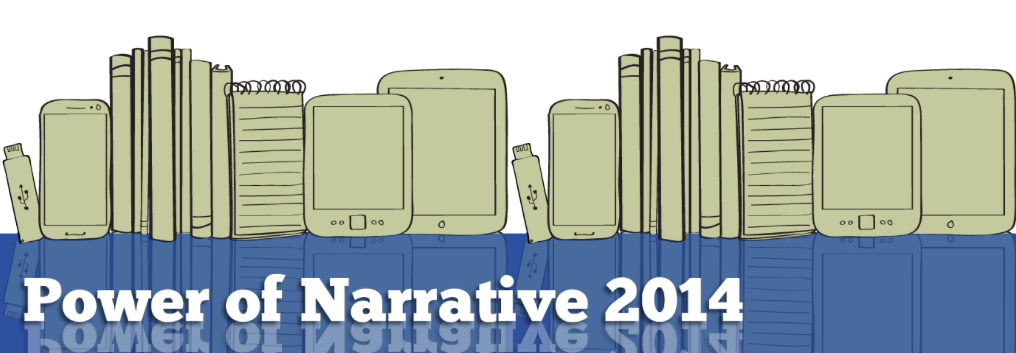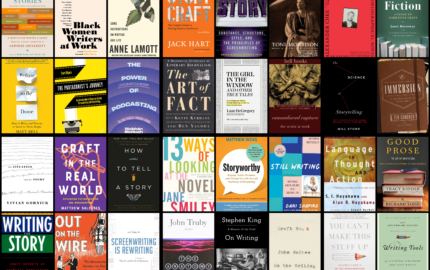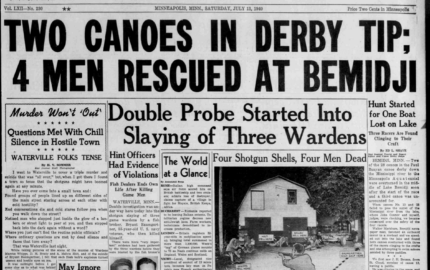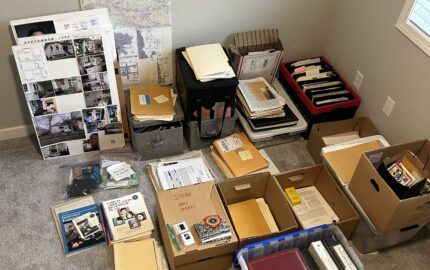Fifty takeouts from some of the speakers at last weekend’s Boston University conference on narrative, culled from the Twitter feeds of Lauren Alexander, Alletta Cooper, Cat Cowan, Jessica DuLong, John R. Gagain Jr., Sascha Garrey, Nate Goldman, Kate Hoagland, Robin Lubbock, Cristian Lupsa, Sophia Diogo Mateus, Simina Mistreanu, Lisa Mullins, Amy O’Leary, Greg Rienzi, Beth Schwartzapfel, Emily E. Smith, Sebastian Stockman, Eric Trickey, Ware Verhalen and Mark Zastrow. For the full speaker list go here, and for more tweets search #narrativeBU.
Caryn Bush Baird, senior news researcher, Tampa Bay Times:
Jacqui Banaszynski, professor and Knight Chair in Editing, Missouri School of Journalism:
 Dan Barry, “This Land” columnist, the New York Times:
Dan Barry, “This Land” columnist, the New York Times:
David Blum, editor, Kindle Singles:
Jennifer Bogo, executive editor of Popular Science:
Jennifer Brandel, founder and senior producer, WBEZ Chicago’s Curious City:
David Carr, business columnist and cultural reporter, the New York Times, and the inaugural Andrew R. Lack Professor at Boston University’s College of Communication:
Kat Chow, founding member of Code Switch, NPR’s race, ethnicity and culture team:
David Finkel, reporter and editor, the Washington Post, and author of Thank You for Your Service: //this section has several different voices. Not sure whether/how to make them parallel
Travis Fox, Emmy-winning journalist and the incoming director of the Visual Journalism department at the City University of New York Graduate School of Journalism:
Adam Hochschild, acclaimed author of nonfiction books including King Leopold’s Ghost, and a founding editor of Mother Jones:
Suketa Mehta, associate professor of journalism at New York University and author of Maximum City: Bombay Lost and Found:
Amy O’Leary, reporter, New York Times:
Essdras Suarez, Boston Globe photojournalist:
Caryn Bush Baird, senior news researcher, Tampa Bay Times:
A newspaper is a city’s diary, and what we write never goes away.
Jacqui Banaszynski, professor and Knight Chair in Editing, Missouri School of Journalism:
“If you don't live the world as it is, nothing you write will move the human heart.” — quoting Roger Rosenblatt, author of Unless It Moves the Human Heart: The Craft and Art of Writing.
Today, the world’s storytellers need to get better at craft. We can’t afford to be sloppy, do it badly, be lazy.
Your job is to be stupid. (to a young journalist afraid of looking stupid in an interview)
My cardinal rule for interviewing: It’s not about me.
When interviewing, use artifacts or photos, ask framed questions, dare to ask, use multiple curiosities.
Pay attention to smell, taste, details of the environment.
 Dan Barry, “This Land” columnist, the New York Times:
Dan Barry, “This Land” columnist, the New York Times:Some surprises come off as cheap, and you have to be wary of it.
Read your copy aloud. You can hear when you get bored.
Writer's block results often from not enough reporting. You’re trying to write around what you don't know.
Screw [my colleagues]. I want [readers] to read my story.
In the first few paragraphs of a story I like to use strong verbs to create tension and keep the reader's attention.
Dan Barry, Storified.
David Blum, editor, Kindle Singles:
In order for a memoir to work, it has to be about something larger than you. What the reader is looking for is common ground.
Jennifer Bogo, executive editor of Popular Science:
Figure out the tension, then shape your pitch around it.
Jennifer Brandel, founder and senior producer, WBEZ Chicago’s Curious City:
Time for reflection matters after projects. What went well? What didn't? How do we measure success?
How can you use the fascinating stuff that you don’t include in the story? Tumblr, videos, etc.
David Carr, business columnist and cultural reporter, the New York Times, and the inaugural Andrew R. Lack Professor at Boston University’s College of Communication:
Being big on Twitter is like being big in Japan. You can't use it as a metric of your actual reach.
Metrics driving journalism show what people want are big, glorious stories.
Twitter has something to do with headlines but nothing to do with narrative.
So many good things happen when you go. An old prof, Paul Hendrickson, had a maxim: "If you go, it'll happen."
Great stories happen alone in a room filled with fear and insecurity.
A gifted storyteller knows pace.
Kat Chow, founding member of Code Switch, NPR’s race, ethnicity and culture team:
There's so much anxiety. I think that's a trait for every journalist.
Why narrative? It’s simple. It’s just the way to get a story across.
David Finkel, reporter and editor, the Washington Post, and author of Thank You for Your Service: //this section has several different voices. Not sure whether/how to make them parallel
"The job of a writer is not to judge but to understand." (quoting Hemingway)
He indexes all his notebooks and their contents by page on his computer and writes backward from it.
The best way to learn narrative journalism is to read the good stuff, analyze it and figure out why it works.
He asks his longform reporters to complete two sentences when pitching a story: 1) This story is about .; 2) This story needs to appear now because .
I don’t want the character talking to me as a reporter, but to each other. I'd rather have dialogue than quotes.
I’m starting to think the best move is to give away the ending early.
Chronology is your friend. Things happen in order. Doesn't mean you have to tell it in order.
The first 35 pages of Richard Ben Cramer's What It Takes is a master class in how to control time.
Travis Fox, Emmy-winning journalist and the incoming director of the Visual Journalism department at the City University of New York Graduate School of Journalism:
Start making films, filmmakers. The technology is there to be both cinematographer/producer.
This @Radiolab video is an example of the importance of image sequencing.
Voice shows more in editing than in shooting. It has to appeal to the heart, not the mind.
Adam Hochschild, acclaimed author of nonfiction books including King Leopold’s Ghost, and a founding editor of Mother Jones:
I'm always looking for suspense points, a place to pause the action, shift to a different part of the story.
The essence of news is you give it away in the first graphs. In narrative you don’t. Use hints, suspense points.
Go where you can find people’s voices, and bring alive the time and place you want to write about.
Too-prevalent myth: Everything you ever wanted to know about everything is on the Internet.
Suketa Mehta, associate professor of journalism at New York University and author of Maximum City: Bombay Lost and Found:
Every journalist should take a short-story course. Readers are entitled to derive pleasure from the prose.
When interviewee veers off topic, use digression to note scene, setting and more.
Take a nap. Always take a nap. (on revision)
Amy O’Leary, reporter, New York Times:
When you're thinking about storytelling and media, the solution isn't always sexy. Think about what the reader needs.
Crowds out the door for @amyoleary's breakout session on digital trends.
Sometimes you have a bigger impact with smaller, less ambitious projects.
Always start with the story. The digital components will follow. (on multimedia storytelling)
What multimedia should you use? First ask what story you’re trying to tell.
Sometimes you fall in love with your own idea, and it doesn't work. Trust your colleagues.
Essdras Suarez, Boston Globe photojournalist:
It’s not about the cameras, it's about how you see the world.



